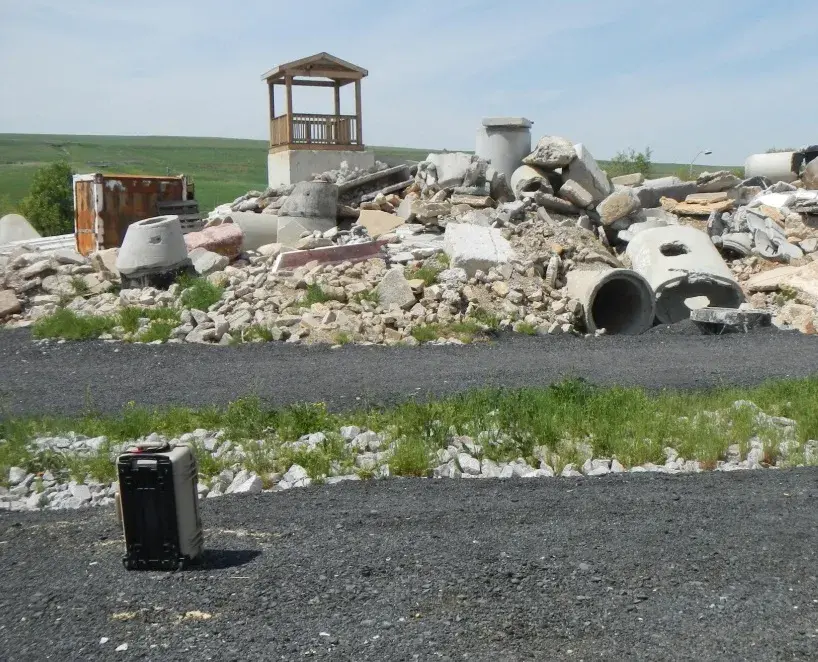When the Department of Homeland Security (DHS) is looking for a new technology to help fight terrorism, recover from a  natural disaster, or support the nation’s first responders, it turns to its Science and Technology Directorate (S&T). S&T then collaborates with its federal partners, as well as industry, and academia, and finds these solutions more efficiently and economically than ever before.
natural disaster, or support the nation’s first responders, it turns to its Science and Technology Directorate (S&T). S&T then collaborates with its federal partners, as well as industry, and academia, and finds these solutions more efficiently and economically than ever before.
S&T’s research managers do their homework; they canvas journals, patents, labs, and forums across the Web, looking for technologies that would be readily adaptable to enhance the homeland security mission. Experts call such quests technology foraging—a hunt to discover what others are doing to solve the same types of problems, rather than “reinventing the wheel.”
“When people think ‘innovator,’ they think ‘Thomas Edison’—a lab genius who created science breakthroughs,” says Stephen Hancock, a former Navy aerospace engineering duty officer who leads the S&T tech foraging initiative. “But today we need innovators who can recognize a breakthrough, adapt it, package it, and then field it. It is the reinventing of invention itself. After all, we’re not the only ones facing the same kind of challenges,” says Hancock.
In 2011, technology foraging became a cornerstone of S&T’s mission. Every technology development project must now include a foraging plan explaining how the team will strive to find and adapt a solution already achieved by a company, university, other agency, or other country.
Tech foraging calls for far more than an afternoon of surfing the Web. These S&T researchers, analysts, scientists and other specialists who research existing technology solutions are called foragers. “They’re a special breed,” says Hancock, “with a nose for opportunity and a knack for teaming.” Every forager must know how to scan the marketplace of ideas, spot trends, forecast a technology’s market demand, analyze alternatives, and shepherd a technology from lab to street. The Technology Foraging Office, managed by S&T’s Research and Development Partnerships Office (RDP), brokers deals between S&T and all sectors of government, business, and research.
Technologies that are ready for DHS adaptation are found almost anywhere. For example, the U.S. Coast Guard asked S&T to find a way to track small, “dark” vessels—anonymous boats, rafts, or other watercraft that transport drugs or other illegal contraband. Small dark vessels operate in the vastness of the ocean and are difficult for the Coast Guard to discriminate from legitimate boat traffic. An S&T forager learned that the National Oceanic and Atmospheric Administration (NOAA) operated radar to monitor ocean current and wave action along the nation’s coasts. Working with NOAA, S&T developed software that lets the Coast Guard sweep a bay with radar, then use NOAA’s coastal-weather radar system to pick out and describe illegal, semi-submersible dark vessels.
Another good example of an S&T tech foraging success is a collaboration made with NASA’s Jet Propulsion Laboratory when S&T had been asked to look for disaster victim detection technologies. NASA had developed a technology that detects human heartbeats and began working with S&T to modify the technology for use in search and rescue operations. Together the interagency team found similar research was done in the 1990s at Michigan State under a grant from the National Science Foundation. S&T’s First Responders Group and the NASA team used the results of the Michigan State research to verify technical assumptions and approaches, saving time, resources, and avoiding duplicate research. They also contacted the now retired Michigan State researcher, who was willing to help the team to improve the technology for victim detection. One year later, the S&T and NASA team now have an early prototype called Finding Individuals for Disaster and Emergency Response (FINDER). Field tested in June, FINDER is showing extremely promising test results in real world urban search and rescue training environments. In less than a minute, FINDER detected 3 heartbeats of people hidden in test rubble.
“These successful examples of tech foraging show how multiple investments from federal agencies can be leveraged, especially when program managers actively look for opportunities to re-purpose research and development, reducing costs and creating new homeland security solutions,” says Hancock.
Technology foraging, like research and development, is about getting life-saving inventions out of one venue—a university lab, an outdoor-adventure catalog, an army base—and into the hands of front line operators around the country.
To request more information about this story, please e-mail st.snapshots@hq.dhs.gov.
